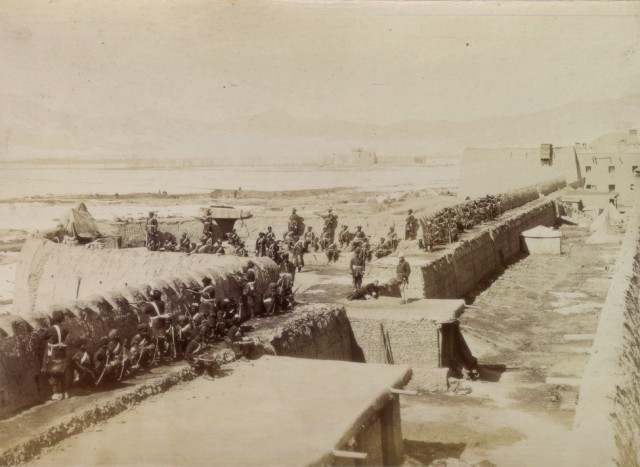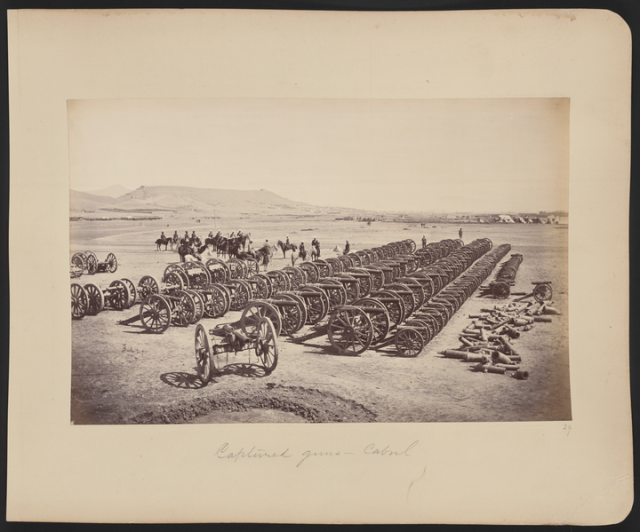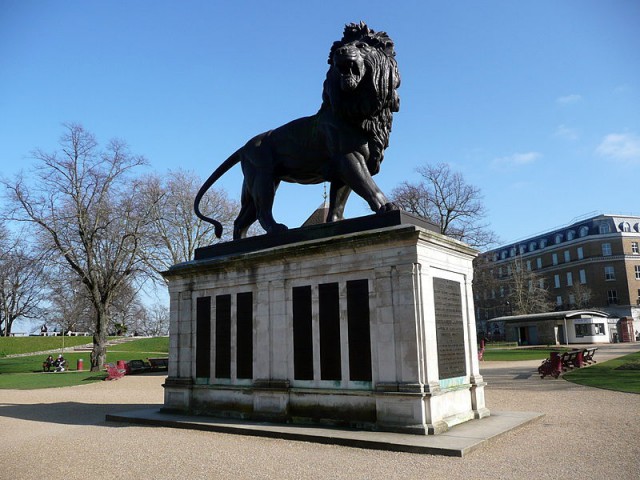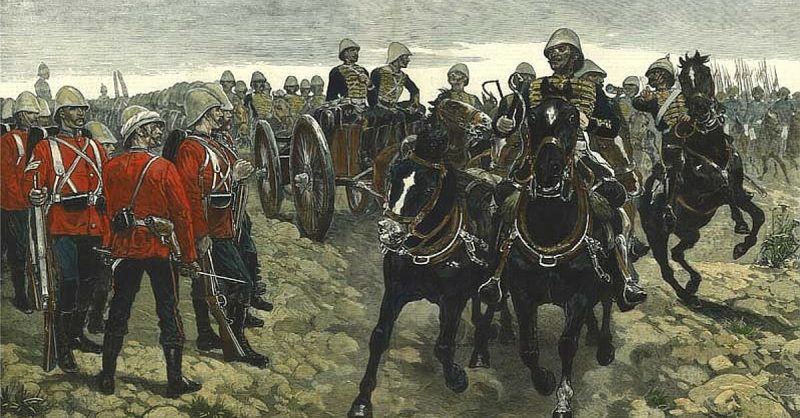It was the 27th of July, 1880. In the incredible heat of the high Afghan summer, an army of two and a half thousand men marched toward the village of Maiwand. They had broken camp and begun the march early, while the day was still relatively cool, but by the time the enemy was spotted they had been marching for almost four hours. Sweat soaked their backs and many had not eaten since the night before. Water was carefully rationed.
This was the command of Brigadier General George Burrows. He was leading a mixed force of British and Indian Army soldiers, infantry, cavalry, and cannon. His goal was to intercept the army of Ayub Khan, a young Afghan nobleman who had raised an army in defiance of the unwanted British Empire. Ayub Khan was headed for the city of Kabul, and Burrows had been dispatched from Kandahar to halt his advance.
At ten o’clock in the morning on the wide and open plain North West of Maiwand, the enemy was sighted. The heat was intense, and the haze turned the baked valley floor into a treacherous maze of mirages.
Visibility was low, but on the hills away off in front of the army dark moving columns of men could be seen. They resembled nothing so much as great forests of trees, a mighty host almost ten times the size of Burrows’ command. As Ayub Khan had marched he had added to his army many thousands of the skilled, loyal and ferocious warriors known as Ghazis. The terrible reputation of these men struck fear into the hearts of their enemies.

Burrows’ army marched on for another two miles until they passed the deserted villages of Khig and Mundabad. The residents had fled at the approach of the two great armies. The small groups of simple houses were eerily silent as the British and Indian Regiments raised clouds of dust in their passing. Burrows moved his force into position to the east of the villages.
Ayub Khan’s force was deployed on the hills above them. He was well supplied with over thirty artillery pieces, interspersed between units of infantry. As the heat continued to intensify the thunder of the cannons began.
There was no cover, and Burrows’ troops took damage. His cannon returned fire, sending an advance of enemy cavalry into retreat. Under the cover of the artillery bombardment Ayub Khan’s infantry began to advance toward Burrows’ line, while cavalry in loose formation moved North of them, covering their left flank.
Khan’s infantry took cover in a dry watercourse some five hundred yards from Burrows’ line and began to open fire. From the direction of the villages, firing could also be heard; it seemed that the baggage camp to the rear of the British and Indian force had come under attack.
The smaller force was almost surrounded and had lost almost a third of their men to artillery fire. Ayub Khan had moved a great body of men up in the cover of the many dry ditches and watercourses which crisscrossed the plain, and the main body of Burrows’ artillery had used all of their ammunition.
These guns, under the command of Captain John Slade, were now pulled back as quickly as possible. This apparent retreat by the British cannon sent a shiver of doubt through Burrows’ army, already disheartened by exhaustion, the heat and the heavy losses they had sustained. The Ghazis at the front of Khan’s force saw the fear in their enemy’s eyes and charged forth with a terrible shout. They carried huge colored banners and they were robed in white.

Their great black beards bristled and their eyes burned with the fury of battle. The front two units of Burrows’ infantry were overwhelmed, broke and began to flee, and from left to right like a curling wave, the line began to fall back in the face of the onslaught.
John Slade, in command of E/B company, Royal Horse Artillery, had resupplied his guns with ammunition, but after letting off three rounds of small shot toward the advancing Ghazis, he gave the order to limber up and join the retreat. On the left, two of the cannon were overrun and a vicious hand to hand fight ensued, which the defenders could not hope to win.
On the right, the commanding officer, Lieutenant Osbourne, fell to a bullet wound as his guns retreated. Wounded men clung to the limbers as the cannon pulled back toward the village of Khig, south of Mundabad.
The 66th Regiment of Foot was the only unit in Burrows’ force which had remained relatively unscathed in the disastrous battle. They had been driven back to a shallow ravine just East of the village where they now made a heroic attempt to fight a rearguard action for the protection of the retreating troops.
At the village, Captain John Slade had set up his remaining cannon and was firing at the advancing Afghan forces, and Colonel Galbraith of the 66th raised the Union Jack on the south side of the ravine. The last of his men rallied to him, around two hundred strong, but as he raised the colors aloft he was shot down.
Step by step, the remains of the 66th were forced back, fighting all the while to keep their colors high. They retreated into the village, through the village, and at the last into a little garden surrounded by a low mud wall. There were only fifty-six men left.

Here they again raised the colors and made a last desperate stand, though there was now no hope of survival. The sea of the enemy roared and seethed around them, but in the face of their determination to fight to the death, none were prepared to engage them hand to hand.
The Afghan forces fired at them from a distance, whittling them down to eleven men. At the last, these eleven charged out of the shelter of the walled garden into the mass of the enemy, firing until they had no ammunition left, then fighting with bayonets until all were killed.
Nearly a thousand soldiers were lost at the Battle of Maiwand, but the enemy paid dearly for it. Ayub Khan lost three thousand warriors, and his advance had been stopped. Burrows proceeded across a torturous retreat, gaining the city of Kandahar with his shattered force the next day.
The army of Ayub Khan was destroyed by General Sir Frederick Roberts in the famous Battle of Kandahar a month later, the last engagement of the Anglo-Afghan war of 1880.
-By Barney Higgins
